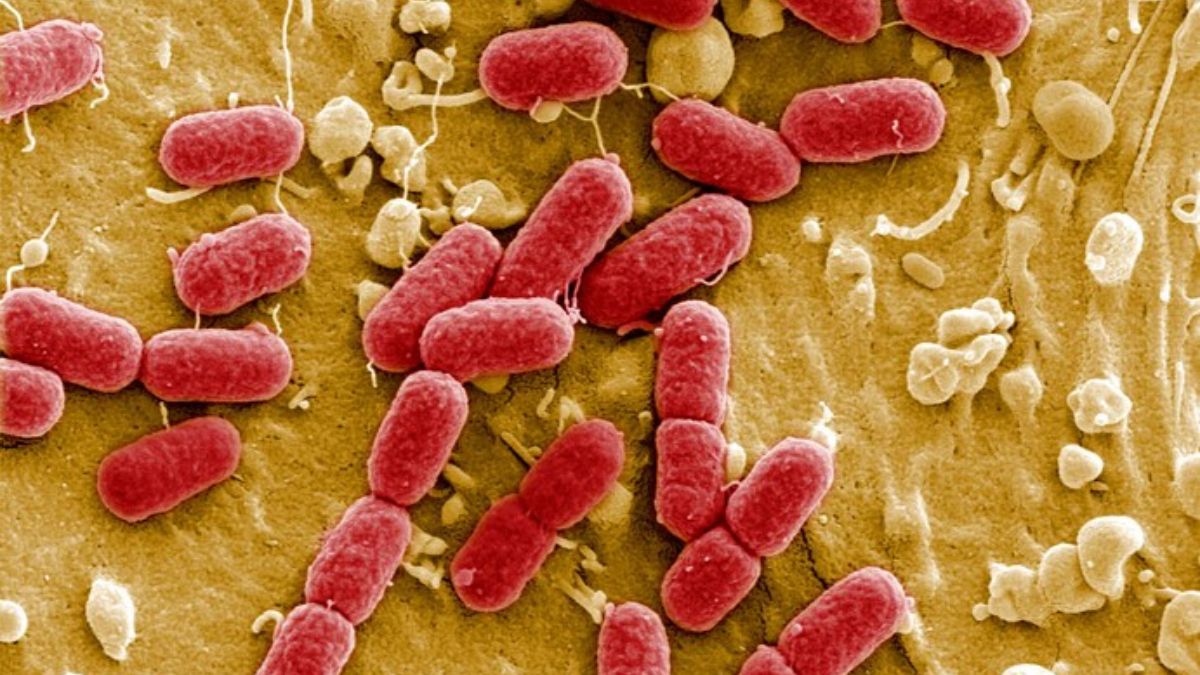A recent E. coli outbreak in the UK has been linked to contaminated lettuce, commonly used in sandwiches, wraps, and burgers, causing widespread concern among consumers and health authorities alike. After a spike in cases all over the country, dozens of sandwich types sold in supermarkets have been recalled by companies over fear of spreading the infection read more
)
Over 250 E. coli infections have been detected in UK, with authorities linking the source to lettuce. Reuters
A widespread E. coli outbreak has sickened more than 250 people in the United Kingdom (UK) in recent weeks, said the country’s Health Security Agency, further warning that the number of cases is likely to rise.
Further, at least 86 people have been admitted to hospitals after they experienced E. coli symptoms which is thought to be caused by some pre-packed sandwiches containing lettuce.
As authorities scramble to contain the outbreak and prevent further cases, three suppliers in the UK have in recent days recalled 60 types of pre-packed sandwiches, wraps, and salads over infection fears.
Here’s a comprehensive look at what we know so far.
What is E. coli?
According to the Cleveland Clinic, E. coli (Escherichia coli) is a group of bacteria that normally resides in the gut (gastrointestinal/GI tract) of healthy people and animals. The strains that inhabit the intestine are generally harmless and even aid in digestion. However, under certain conditions, some strains of E. coli can cause illness.
One such strain is Shiga toxin-producing E. coli (STEC), a bacterium known for causing severe foodborne diseases, including food poisoning. In the current outbreak, all recorded cases involve STEC, with young children, elderly people, and those with underlying conditions in their immune systems at the most risk.
Typically, the UK sees about 1,500 cases of STEC annually, according to the UK Health Security Agency (UKHSA).
How does E.coli spread?
According to Healthline, primary sources of STEC outbreaks are raw or undercooked ground meat products, raw milk, and fecal contamination of fruits and vegetables.
It is often spread by close contact with an infected person, as well as direct contact with an infected animal or its environment but can also be transmitted by eating contaminated food.
This time, the officials are “confident” that lettuce leaves used widely in sandwiches, wraps, and burgers are likely to be the source of rising E.coli infections.
Which companies have recalled products?
On 14 June, Greencore, the sandwich manufacturer that supplies UK supermarkets, recalled its products because of an E.coli risk.
The products included sandwiches, wraps, and salads sold at Sainsbury’s, Asda, Aldi, Morrisons, Co-op, and retail pharmacy chain Boots.
Following Greencore, another sandwich manufacturer Samworth Brothers Manton Wood recalled its products.
Subsequently, on June 17, another company called THIS! announced a recall specifically for a vegan chicken and bacon wrap sold exclusively at WHSmith.
These recalls were deemed precautionary steps by the companies involved. The Food Standards Agency has pinpointed the source of the outbreak “to a small number of salad leaf products that have been used in sandwiches, wraps, subs and rolls”.
How could lettuce lead to infections?
Professor Jim Monaghan, a crop science expert at Harper Adams University in Shropshire, explained to Sky News that there are three main ways lettuce leaves can become contaminated with E. coli.
“E. coli essentially wants to be inside the guts of warm-blooded animals,” he said. Pathogenic strains can be found in 10-15 percent of dairy herds, meaning that a minority of manure is contaminated with E. coli.
This contaminated manure can directly contaminate lettuce leaves. In cases of indirect contamination, the bacteria can enter the soil or water and then be transferred to the lettuce.
According to officials, 168 cases of E.coli have been detected in England so far, with 56 in Scotland, 29 in Wales and three in Northern Ireland.
What are the symptoms?
According to Healthline, abdominal cramps, nausea vomiting and diarrhoea (often bloody) are some common symptoms associated with E.coli infections. Fever may be present but is usually mild.
In some cases, particularly among young children and the elderly, E. coli infection can lead to serious complications like hemolytic uremic syndrome (HUS), a condition that causes kidney failure and can be life-threatening.
In an information leaflet, the UKHSA said that HUS may occur up to two weeks after the start of the diarrhoea while adding, “If your symptoms do not go away or you develop easy bruising, feel you are passing less urine than usual or your urine is pink/brown in colour, please urgently seek medical advice as these symptoms could indicate the start of HUS and you may need further tests.”
Also, a small proportion of adults may develop a similar condition called thrombotic thrombocytopenic purpura (TTP).
How is E. coli infection treated?
According to US Centres for Disease Control, there is no targeted treatment for a STEC infection, which typically resolves on its own within about a week.
Howver, managing symptoms involves staying well-hydrated since diarrhoea can quickly lead to dehydration. It’s crucial to avoid antibiotics as they can heighten the chances of developing complications like HUS.
How to stay safe?
As per UK Health Security Agency, “Washing your hands with soap and warm water and using disinfectants to clean surfaces will help stop any further spread of infection.”
Additionally, “If you are unwell, you should not prepare food for others while unwell and avoid visiting people in hospitals or care homes to avoid passing on the infection in these settings.
“Do not return to work, school or nursery until 48 hours after your symptoms have stopped,” it added.
With input from agencies

 2 months ago
25
2 months ago
25


















)
)
)
)
)
)
)
 English (US) ·
English (US) ·